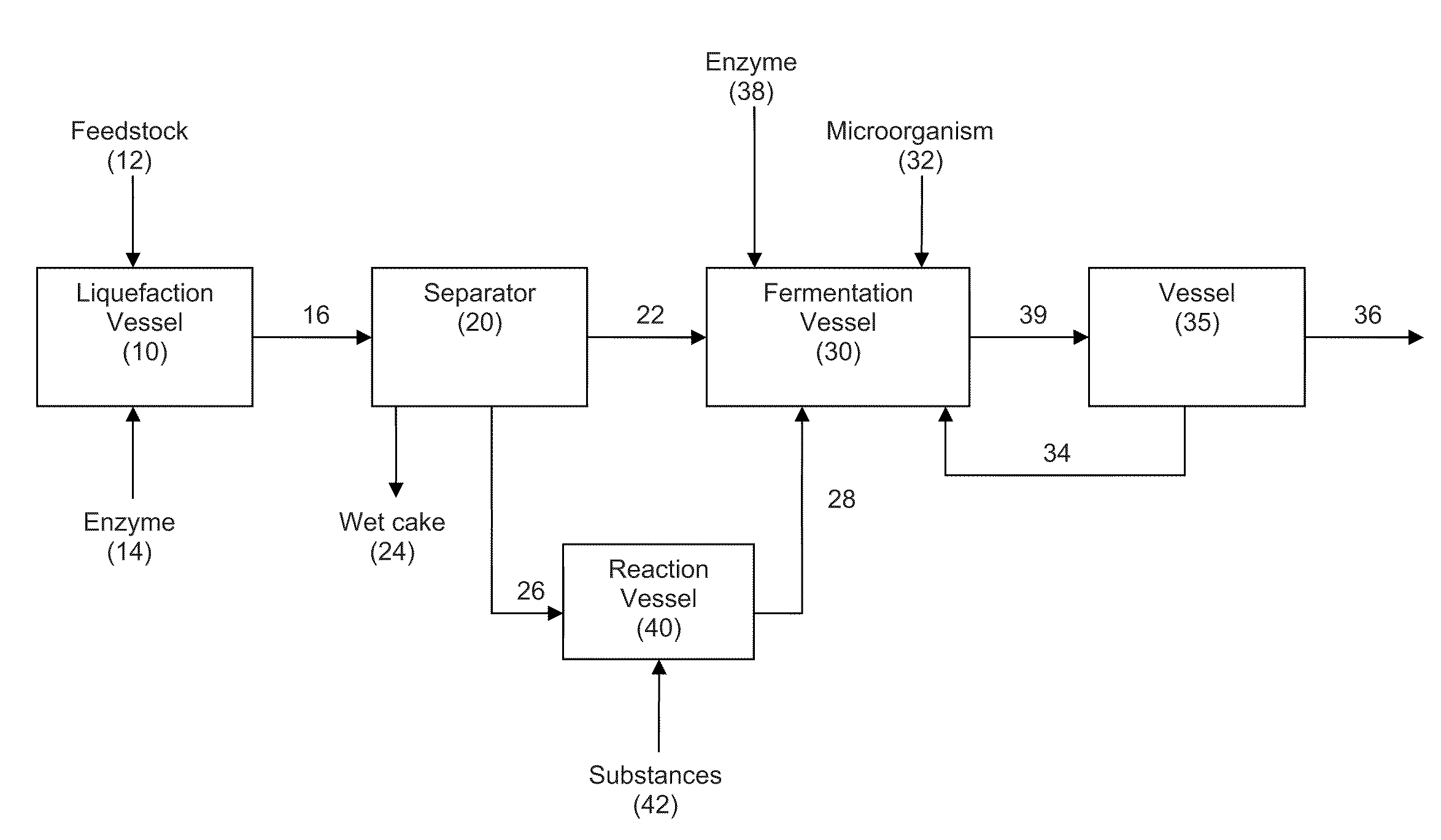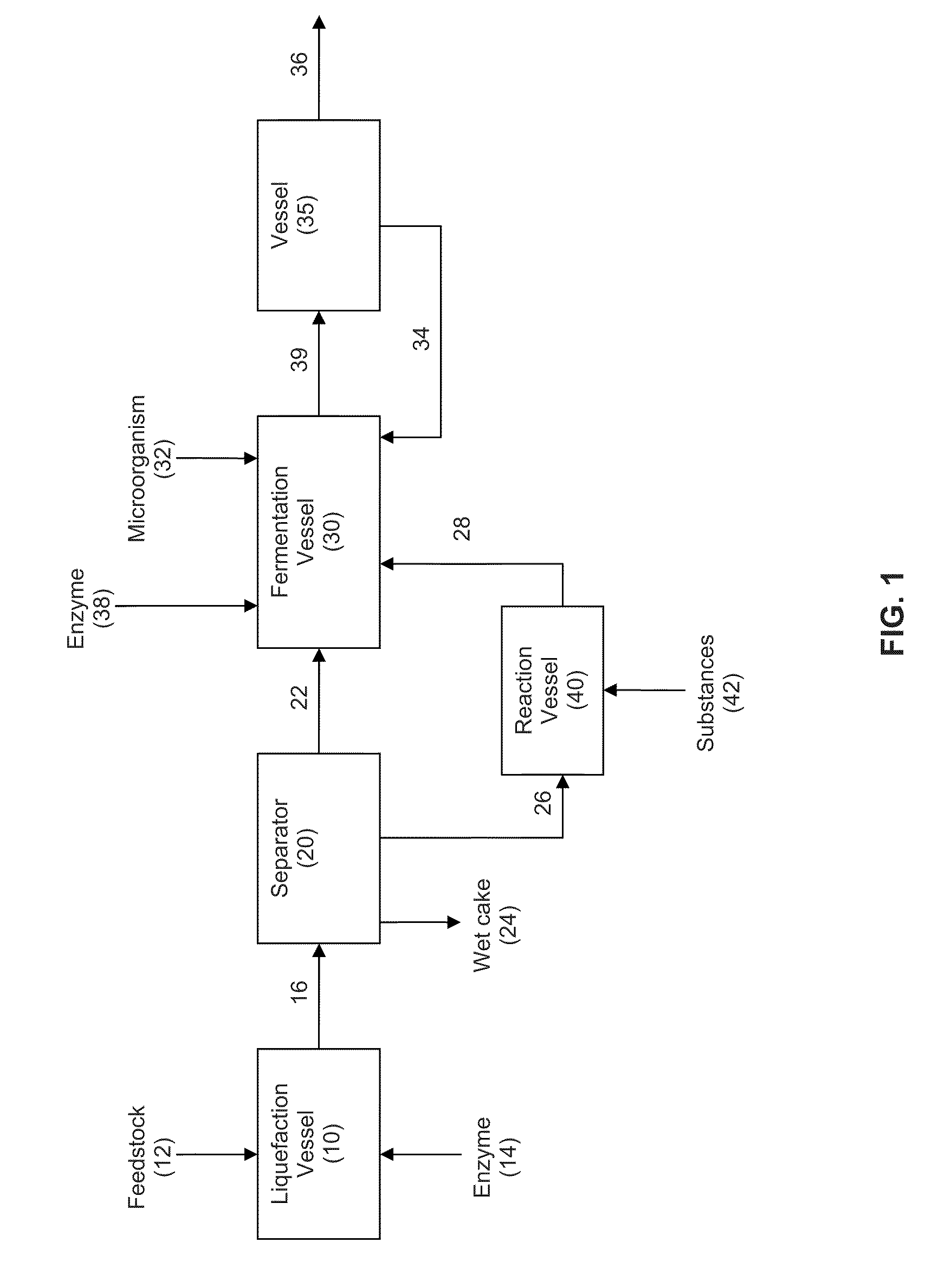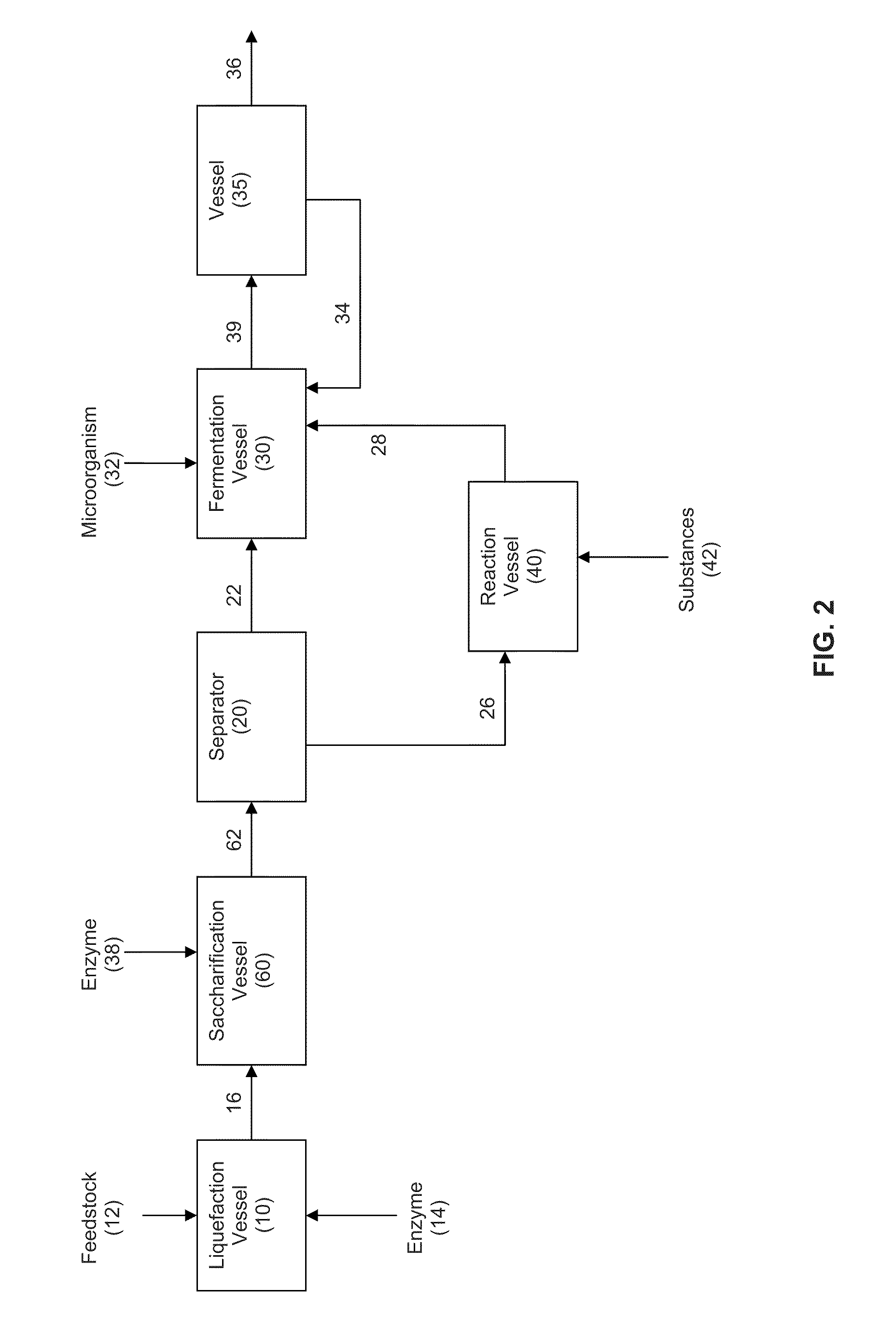Extraction solvents derived from oil for alcohol removal in extractive fermentation
- Summary
- Abstract
- Description
- Claims
- Application Information
AI Technical Summary
Benefits of technology
Problems solved by technology
Method used
Image
Examples
example 1
Hydroxylated Triglycerides from Corn Oil
A. Corn Oil Hydroxylation (63% Hydroxylation)
[0201]To a three-neck 500 mL flask equipped with a mechanical stirrer and addition funnel was added corn oil (50.0 g), toluene (25.0 mL), Amberlyte IR-120 resin (12.5 g), and glacial acetic acid (7.5 g). The resulting mixture was heated to 60° C., and then hydrogen peroxide (41.8 g of 30% H2O2 in water) was added dropwise over one hour. The mixture was stirred at 60° C. for two hours, upon which time the reaction mixture was worked up: resin was removed by filtration, and the filtrate partitioned between ethyl acetate (75 mL) and water (50 mL). After the layers were separated, the organic layer was washed with sat. aq. NaHCO3 solution (50 mL), and brine (50 mL). The organic layer was dried over anh. Na2SO4 and concentrated in vacuo to obtain 48.9 g of yellow oil. The 1H NMR analysis of the crude reaction product showed that 63% of double bonds were epoxidized.
[0202]To a 500 mL round bottom flask was...
example 2
Fatty Amides Plus Fatty Acids, and Pure Fatty Amides from Corn Oil
[0209]Corn oil was reacted with aqueous ammonium hydroxide in a manner similar to that described by Roe, et al., J. Am. Oil Chem. Soc. 29:18-22, 1952. Mazola® corn oil (0.818 L, 755 g) was placed in a 1 gallon stainless steel reactor to which was added 1.71 L (1540 g) of aqueous ammonium hydroxide (28% as NH3). The reactor was heated with stirring to 160° C. and was maintained at that temperature with stirring for 7 h during which time the pressure reached 400 psi. The reactor was cooled and the product, a creamy white solid, was removed and the reactor rinsed with ethyl acetate. The product was dissolved in 5 L ethyl acetate and washed 5 times with 500 mL each of water which was neutralized with H2SO4. The ethyl acetate was then dried over anhydrous Na2SO4 and the solvent removed on a rotary evaporator leaving a light brown soft solid.
[0210]13C NMR in CDCl3 indicated that the product contained an approximate 2:1 rati...
example 3
Fatty Alcohols from Corn Oil
[0216]With reference to the reaction of Equation IV above for producing fatty alcohols from corn oil, a 22 L, round-bottom flask equipped with a mechanical stirrer, reflux condenser with N2 source, addition funnel, internal thermocouple, and rubber septum was flame-dried under nitrogen. The flask was charged with 132 g (3.30 moles) of 95% lithium aluminum hydride powder that is weighed out in a dry box and loaded into a solids addition funnel. The 22 L flask was cooled with an ice bath, and 9.0 liters of anhydrous THF were added into the reactor via a cannula. The resulting slurry was cooled to 0-5° C. and a solution of 956 g (1.10 moles) of Wesson® corn oil in 1.00 liter of anhydrous THF was added dropwise over 2-3 hours while holding the reaction temperature at 5-20° C. After adding the corn oil, the slurry was stirred overnight at ambient temperature. When the reaction was done, as verified by TLC chromatography, it was quenched by the dropwise additio...
PUM
| Property | Measurement | Unit |
|---|---|---|
| Volume | aaaaa | aaaaa |
| Volume | aaaaa | aaaaa |
| Volume | aaaaa | aaaaa |
Abstract
Description
Claims
Application Information
 Login to View More
Login to View More - R&D
- Intellectual Property
- Life Sciences
- Materials
- Tech Scout
- Unparalleled Data Quality
- Higher Quality Content
- 60% Fewer Hallucinations
Browse by: Latest US Patents, China's latest patents, Technical Efficacy Thesaurus, Application Domain, Technology Topic, Popular Technical Reports.
© 2025 PatSnap. All rights reserved.Legal|Privacy policy|Modern Slavery Act Transparency Statement|Sitemap|About US| Contact US: help@patsnap.com



